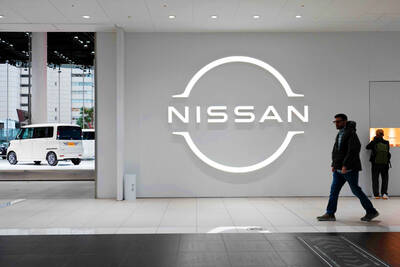When founding Quanta Computer Inc (
This was a bold move, considering that the 1980s was the age of the rise of desktop computers, especially with IBM Corp betting heavily on their desktop machines to be tomorrow's stars.
"People laughed at us and viewed Quanta's first portable products as a piece of junk at that time," Lam said at a Jan. 5 media roundtable on Taiwan's competitiveness.
But the contempt did not deter Quanta's determination to pursue laptop production, and the firm's far-sightedness has turned it into the world's largest notebook contract maker, with volumes hitting around 18 million units last year. The company's customers include computer vendors such as Apple Computer Inc, Dell Inc, Hewlett-Packard Co, Matsushita Electric Industrial Co and Sony Corp.
No bed of roses
However, the notebook production business is not a bed of roses for Quanta, as it is faced with the issue of lower margins, along with other makers.
"In fact, most notebook contract makers are now posting much lower profit margins than the 5 to 6 percent reported. A five-percent margin is already a good deal to most," said Albert Chen (
This probably challenges makers to think of their next "winning formula," and Quanta is no exception.
"What's next after notebooks? Computers are only accessible to fewer than 20 percent of the world's population. How can we provide different forms of devices to make mobile computing possible to most?" Lam asked.
This probably explains the rationale behind Quanta's participation in the "One Laptop per Child" project.
Launched in January last year by Nicholas Negroponte, chairman and co-founder of the Massachusetts Institute of Technology's Media Lab, the scheme aims to develop computers for children around the world priced at US$100, far lower than the current cheap notebooks sold at US$500.
While industry watchers question the viability of the project, which is set to churn out 5 million to 15 million units of budget laptops by the end of this year, Quanta seems to be unperturbed and is again convinced that it is on the right track.
Quanta is just one of the cases where local PC makers are attempting to diversify into new market segments, or "blue oceans," to maintain future competitiveness.
"Blue ocean strategy," a hot term in Taiwan's IT industry last year, refers to competition in an uncontested market space, while companies adopting "red ocean strategy" are those competing in an existing market and undercutting each other as most do now.
Acer Inc also realized that instead of concentrating all its efforts on the contract manufacturing business, it should dip into the blue ocean for growth.
The company, founded 30 years ago, thus spun off its manufacturing operations in 2000 to focus on globally marketing its brandname products including desktop and portable computers.
The efforts bore fruit last year as Acer successfully became the world's fourth largest branded computer maker, pushing it one step closer to joining the top-three club next year.
What consumers want
However, understanding what consumers really want is the toughest job for contract makers venturing into brandname business, as they have long been designing and manufacturing products based on clients' requirements, said Simon Yang (
"They need to enhance after-sales services to listen to consumers' voices, and focus on various markets with smaller volumes as a start," Yang said.
By dedicating resources to more markets, the volumes added up in total would be significant, which would help to boost a company's market share, Yang added.
In addition to adopting a "blue ocean" strategy, Taiwanese makers have been quick to relocate assembly lines offshore, including to China, to improve margins, taking advantage of the lower labor and production costs there.
Last year, First International Computer Co (
"Now, over 90 percent of Taiwanese notebook production is being churned out in China," MIC's Chen said.
Shipments of notebook computers are expected to climb 18 percent to US$35.8 billion this year, according to the institute's forecast.
But the heart of their research and development (R&D) remains in Taiwan, at least for now.
"However, we see the trend of R&D moving gradually to the mainland over these few years, depending on the maturity of the engineers there," Chen added.
A case in point is the nation's largest laptop maker Asustek Computer Inc (
Quanta's Lam said that the number of local engineering graduates every year is insufficient to deal with the industry demand and that companies have to turn to China.
"But the quality of local engineers here is still better compared to their Chinese counterparts," Lam said.
In Chen's opininon, it is irrelevant whether notebook manufacturing or R&D is done locally or offshore because it is not equivalent to the competitiveness of the industry.
"Companies will eventually find their own `blue ocean strategy' to embrace the competition, as they always did in the past," he said.

TEMPORARY TRUCE: China has made concessions to ease rare earth trade controls, among others, while Washington holds fire on a 100% tariff on all Chinese goods China is effectively suspending implementation of additional export controls on rare earth metals and terminating investigations targeting US companies in the semiconductor supply chain, the White House announced. The White House on Saturday issued a fact sheet outlining some details of the trade pact agreed to earlier in the week by US President Donald Trump and Chinese President Xi Jinping (習近平) that aimed to ease tensions between the world’s two largest economies. Under the deal, China is to issue general licenses valid for exports of rare earths, gallium, germanium, antimony and graphite “for the benefit of US end users and their suppliers

Nissan Motor Co has agreed to sell its global headquarters in Yokohama for ¥97 billion (US$630 million) to a group sponsored by Taiwanese autoparts maker Minth Group (敏實集團), as the struggling automaker seeks to shore up its financial position. The acquisition is led by a special purchase company managed by KJR Management Ltd, a Japanese real-estate unit of private equity giant KKR & Co, people familiar with the matter said. KJR said it would act as asset manager together with Mizuho Real Estate Management Co. Nissan is undergoing a broad cost-cutting campaign by eliminating jobs and shuttering plants as it grapples

Dutch chipmaker Nexperia BV’s China unit yesterday said that it had established sufficient inventories of finished goods and works-in-progress, and that its supply chain remained secure and stable after its parent halted wafer supplies. The Dutch company suspended supplies of wafers to its Chinese assembly plant a week ago, calling it “a direct consequence of the local management’s recent failure to comply with the agreed contractual payment terms,” Reuters reported on Friday last week. Its China unit called Nexperia’s suspension “unilateral” and “extremely irresponsible,” adding that the Dutch parent’s claim about contractual payment was “misleading and highly deceptive,” according to a statement

The Chinese government has issued guidance requiring new data center projects that have received any state funds to only use domestically made artificial intelligence (AI) chips, two sources familiar with the matter told Reuters. In recent weeks, Chinese regulatory authorities have ordered such data centers that are less than 30 percent complete to remove all installed foreign chips, or cancel plans to purchase them, while projects in a more advanced stage would be decided on a case-by-case basis, the sources said. The move could represent one of China’s most aggressive steps yet to eliminate foreign technology from its critical infrastructure amid a